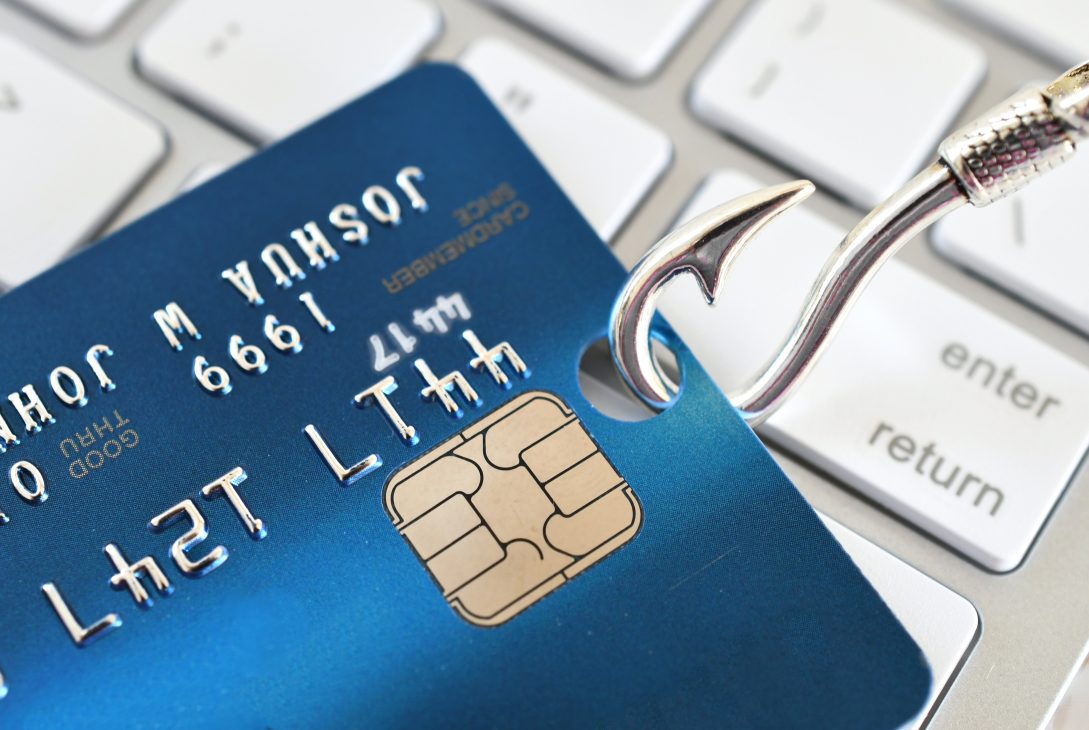In the busy city of New York, there was a brilliant young engineer named Mark, a recent MIT graduate with a bright future ahead of him. Mark had just landed his dream job at a top tech company and was eager to make a name for himself. He was known among friends and colleagues for his quick wit and passion for cybersecurity.
One evening, Mark received an email from his bank, alerting him that there had been some suspicious activity on his account. The email contained a link to reset his password, and Mark, concerned about his financial security, immediately clicked on the link and followed the instructions to create a new password. Little did he know, the email was a well-crafted phishing scam, and he had unknowingly fallen right into the hands of a cunning cybercriminal.
The criminal, who went by the online alias “Shadow,” had been monitoring Mark’s online activity for weeks, studying his habits, interests, and behaviors. Armed with Mark’s login credentials, Shadow wasted no time in infiltrating Mark’s bank account and credit cards, making large purchases and emptying his savings.
But Shadow didn’t stop there. He soon found Mark’s social security number and used it to create new credit cards, loans, and even a fake driver’s license in Mark’s name. Mark’s identity was now firmly in the hands of a cybercriminal, and his life quickly began to unravel.
As the weeks went by, Mark started to notice the consequences of the identity fraud. His credit score plummeted, he received collection notices for debts he didn’t recognize, and his once-promising career began to suffer. Desperate to regain control, Mark reached out to law enforcement, who put him in touch with a cybersecurity expert named Sarah.
Sarah, a seasoned professional, immediately recognized the signs of a sophisticated identity theft operation. She worked closely with Mark to report the fraudulent accounts, dispute unauthorized transactions, and monitor his online presence. Through careful investigation, Sarah and the authorities were able to track down Shadow and bring him to justice.
Mark was able to regain control of his life and recover from the financial setbacks caused by the identity theft. The experience taught him a valuable lesson: even the most tech-savvy individuals can fall victim to cybercrime. Mark went on to become a passionate advocate for cybersecurity education, determined to help others avoid the pitfalls he had experienced.
What is Identity Theft?
Identity theft is a type of crime in which an individual’s personal information is stolen and used without their consent, typically for financial gain or other fraudulent purposes. The information stolen can include a person’s name, social security number, date of birth, bank account numbers, credit card numbers, and other sensitive data that can be used to impersonate the victim.
Identity theft occurs when a criminal gains access to this information through various means, such as:
Phishing scams:
Phishing scams are deceptive tactics employed by cybercriminals to obtain personal information from unsuspecting individuals. These scams often involve sending fraudulent emails, text messages, or making phone calls that appear to be from legitimate organizations, such as banks, government agencies, or well-known companies. The messages may create a sense of urgency or use fear tactics, encouraging the recipient to click on a link or provide sensitive information, such as login credentials, social security numbers, or credit card details. Cybercriminals often design these messages to closely resemble authentic communications, making it difficult for recipients to distinguish between genuine and fraudulent messages.
Data breaches:
Data breaches occur when unauthorized individuals gain access to an organization’s database or network, exposing sensitive customer or employee information. This information can include names, addresses, social security numbers, credit card numbers, and other personal details. Cybercriminals exploit vulnerabilities in an organization’s security systems, using techniques such as hacking, malware, or insider threats to access valuable data. Once the information is obtained, it can be sold on the dark web, used for identity theft, or leveraged for other criminal activities.
Physical theft:
Physical theft is the act of stealing personal belongings that contain sensitive identifying information. Common targets include wallets, purses, mobile devices, laptops, or mail. Thieves may use this information to impersonate the victim, gain access to their financial accounts, or commit other fraudulent activities. Physical theft can occur in various settings, such as public transportation, restaurants, or even the victim’s own home. It is essential to keep personal belongings secure and be cautious about leaving sensitive items unattended.
Dumpster diving:
Dumpster diving involves searching through trash or recycling bins to find discarded documents or other items containing personal information. Criminals may target residential or commercial areas, looking for bank statements, credit card bills, tax documents, or any other paperwork that contains valuable data. Once obtained, this information can be used for identity theft or other fraudulent purposes. Shredding sensitive documents before disposal can help mitigate the risk of dumpster diving.
Skimming:
Skimming is a technique used by criminals to capture credit or debit card information during a legitimate transaction. They achieve this by attaching discreet electronic devices, known as skimmers, to payment terminals like ATMs, gas pumps, or point-of-sale systems. These devices record the card’s magnetic stripe data, which can then be used to create counterfeit cards or conduct unauthorized transactions. Skimming devices can be challenging to detect, so it is crucial to be vigilant when using payment terminals and report any suspicious activity.
Social engineering:
Social engineering is the art of manipulating people into revealing sensitive information or performing actions that benefit the attacker. It involves exploiting human psychology and personal relationships, using tactics such as deception, persuasion, or impersonation. Social engineers may pose as trusted individuals, like coworkers, IT support staff, or even friends and family, to gain the victim’s confidence. They may also use phishing emails or phone calls that appear to be from a legitimate source to extract valuable information. Being aware of social engineering tactics and maintaining a healthy level of skepticism can help protect against these attacks.
How Do Bad Actors Cause Identity Theft?
Once the criminal has access to the victim’s personal information, they can use it for various fraudulent activities, which can have severe consequences for the victim. Some of these activities include opening new credit card accounts or loans in the victim’s name. With the stolen personal information, criminals can apply for credit cards or loans, pretending to be the victim. They may max out these credit lines, leaving the victim responsible for the debt and damaging their credit score. This can make it difficult for the victim to secure loans or favorable interest rates in the future.
Criminals can make unauthorized purchases using the victim’s existing bank accounts or credit cards. By gaining access to the victim’s bank accounts or credit card information, criminals can drain the victim’s finances. This may lead to overdraft fees, declined transactions, and other financial difficulties for the victim until the issue is resolved.
Another fraudulent activity is filing false tax returns to claim fraudulent refunds. Cybercriminals may use the victim’s stolen information to file false tax returns, claiming significant refunds. This can delay the victim’s legitimate tax return processing and cause financial hardship, as they may have to pay back the fraudulently claimed amount.
Criminals can also obtain medical services or prescriptions using the victim’s health insurance. With access to the victim’s health insurance information, criminals can obtain medical services, treatments, or prescription medications under the victim’s identity. This can lead to false medical records, which can cause issues with future medical treatments, and the victim may be held responsible for the costs incurred by the criminal’s actions.
Bad Actors may use the victim’s identity to apply for various government benefits, such as unemployment insurance or social security benefits. This can lead to a loss of benefits for the victim, as well as potential legal issues if the fraud is not detected and reported in time.
In some cases, criminals may use the victim’s identity to commit other crimes, such as drug trafficking, smuggling, or even acts of terrorism. This can result in arrest warrants or criminal charges being filed against the victim, who may have to prove their innocence and disentangle themselves from the criminal activities perpetrated under their name.
These fraudulent activities can wreak havoc on the victim’s financial and personal life, leading to emotional distress, loss of trust, and long-term consequences. It is essential for individuals to be vigilant in protecting their personal information and monitoring their accounts for any signs of suspicious activity.
How Can You Safeguard Against Identity Theft?
To safeguard against identity theft, it is crucial to proactively protect your personal information and remain vigilant in monitoring your financial accounts. One way to do this is by securely storing sensitive documents such as passports, social security cards, and financial records in a safe location. Exercise caution when sharing personal information, particularly online or over the phone.
Creating strong and unique passwords for all your online accounts is another essential step. Opt for passphrases or combinations of letters, numbers, and special characters when creating passwords. Ensure that you use different passwords for each account and change them regularly to maintain account security.
Enabling multi-factor authentication (MFA) for your online accounts whenever possible is also a good practice. MFA adds an extra layer of security by requiring a secondary form of verification like a fingerprint, text message code, or authentication app, in addition to your password.
Being cautious with email and phone communications is crucial in protecting your personal information. Be alert for phishing attempts and unsolicited phone calls requesting personal details. Always verify the legitimacy of the source before providing sensitive information and avoid clicking on suspicious links or downloading attachments from unknown sources.
Make it a habit to monitor your financial accounts regularly. Check your bank and credit card statements for unauthorized transactions or suspicious activity, and report any discrepancies immediately. Also, obtain your free annual credit reports from the three major credit bureaus—Equifax, Experian, and TransUnion—and review them for accuracy. Keep an eye out for unfamiliar accounts or inquiries that may be a sign of identity theft.
Ensuring the security of your digital devices is equally important. Regularly update your computer, smartphone, and other devices with the latest security patches and antivirus software. Use a secure network connection, particularly when accessing sensitive information or conducting financial transactions.
Proper disposal of sensitive documents is necessary to prevent criminals from obtaining your personal information through dumpster diving. Shred these documents before discarding them. Exercise caution when using public Wi-Fi networks for sensitive activities like online banking or shopping. If you must use a public network, consider using a virtual private network (VPN) to encrypt your connection.
Finally, stay informed about the latest scams, data breaches, and identity theft trends. By keeping up-to-date with this information, you can take timely action to protect yourself from potential threats. Following these steps and remaining vigilant will significantly reduce the risk of identity theft and minimize potential damage if your personal information is compromised.
















